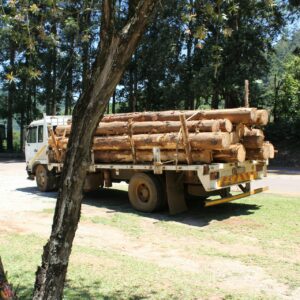When your car is no longer roadworthy, selling it to Car Wreckers Dunedin is often the most convenient and rewarding choice. But have you ever wondered what actually happens to your vehicle after it’s picked up? Many car owners imagine their cars are simply crushed and forgotten, but the reality is far more detailed and sustainable. Behind every car removal lies an intricate process of dismantling, recycling, and reusing that benefits both the environment and the local economy.
In this blog, we’ll walk you through the entire journey your car takes after it leaves your driveway — from initial inspection to eco-friendly recycling — and explain how professional wreckers ensure that nothing goes to waste.
Table of Contents
Toggle1. The Journey Begins – Vehicle Collection and Initial Inspection
The process starts when you contact a wrecker to remove your unwanted vehicle. Once the pickup is scheduled, a trained team arrives at your location to inspect the car. They check basic details like the make, model, year, and general condition to confirm the agreed price.
After you receive instant payment, the wreckers carefully load the vehicle onto a tow truck and transport it to their dismantling facility. Even at this early stage, the focus is on safety, efficiency, and environmental responsibility.
Upon arrival, the car undergoes a more detailed inspection. Experts determine which components can be reused, repaired, or recycled, and which parts need to be safely disposed of.
2. Safe Removal of Hazardous Materials
Before dismantling, wreckers remove any substances that could harm the environment. Cars contain several hazardous fluids and components that must be handled with care. These include:
-
Engine Oil and Transmission Fluid: These are drained and stored for recycling or safe disposal.
-
Coolant and Brake Fluid: Toxic fluids that could contaminate water or soil are carefully extracted.
-
Fuel and Battery Acid: Leftover petrol, diesel, and battery chemicals are removed and either reused or neutralized.
Proper disposal prevents pollution and ensures compliance with environmental regulations. This step is crucial because even a few litres of oil can contaminate thousands of litres of water if not managed properly.
3. Dismantling and Part Reuse
After all hazardous materials are removed, the vehicle is ready for dismantling. Skilled technicians begin taking the car apart piece by piece, salvaging any components that are still functional or can be refurbished.
Some commonly reused parts include:
-
Engines and transmissions
-
Alternators and starter motors
-
Radiators and air conditioning units
-
Doors, windows, and mirrors
-
Seats and interior fittings
These parts are cleaned, tested, and stored for resale. Many car owners and mechanics purchase used parts from wreckers because they are far more affordable than new replacements — yet still reliable.
This reuse process not only saves customers money but also reduces manufacturing demand, conserving raw materials and energy.
4. The Recycling Process – Giving Old Cars New Life
Once all reusable components are removed, the car’s remaining metal shell is prepared for recycling. Modern wrecking facilities use advanced machinery to separate materials like steel, aluminum, copper, and plastic.
Here’s how recycling typically works:
-
Metal Separation: Magnetic systems distinguish ferrous (iron-based) metals from non-ferrous ones.
-
Shredding: The car body is crushed and shredded into small pieces.
-
Material Sorting: These pieces are sorted by type using specialized equipment.
-
Melting and Repurposing: The metals are melted down and used to manufacture new car parts, construction materials, or household goods.
This step is what truly turns “junk” into value — giving your old vehicle a new life in the form of other useful products. Recycling also significantly reduces the carbon footprint compared to producing new metals from raw ore.
5. Responsible Disposal of Non-Recyclable Components
Not every car part can be reused or recycled. Items such as worn-out tires, shattered glass, and certain plastics are separated and sent to licensed waste facilities for proper disposal.
However, modern wreckers strive to minimize waste. For instance, tires can often be repurposed for playground surfaces, road materials, or industrial insulation. Similarly, automotive glass can be crushed and reused in the production of fiberglass and construction materials.
This approach ensures that only a small fraction of the original vehicle ends up in landfills.
6. Documentation and Legal Compliance
Every reputable wrecker follows strict legal guidelines to ensure vehicles are processed correctly. After pickup, ownership is transferred, and the vehicle is deregistered from official records.
Proper documentation is important for both parties — it confirms that:
-
You are no longer responsible for the vehicle.
-
The car won’t be resold illegally.
-
The disposal meets regional environmental standards.
This administrative step guarantees transparency and peace of mind for car owners.
7. Economic and Environmental Benefits of Car Wrecking
Car wrecking isn’t just about getting rid of old vehicles — it plays a vital role in both the local economy and environmental protection.
Economic Impact:
-
Affordable Car Parts: Recycled auto parts allow mechanics and car owners to save money on repairs.
-
Job Creation: The wrecking industry employs local workers in collection, dismantling, and recycling.
-
Resource Efficiency: By reusing materials, wreckers reduce the need for importing new raw resources.
Environmental Impact:
-
Reduced Landfill Waste: Fewer vehicles end up polluting the environment.
-
Energy Conservation: Recycling metals uses less energy than mining and refining new ones.
-
Pollution Prevention: Safe disposal of fluids and chemicals protects soil and water quality.
By selling your car to wreckers, you’re indirectly supporting sustainability while earning cash.
8. The Hidden Value of Your “Useless” Vehicle
Even if your car doesn’t start or has major damage, it still holds value. The metals, wiring, and even tires contribute to the overall payout you receive. Professional wreckers calculate offers based on:
-
Vehicle weight (more metal equals more value)
-
Condition of reusable parts
-
Current market rates for scrap metal
-
Transportation distance
This means almost every car — regardless of age or damage — can earn you a reasonable return.
9. What Happens to the Recycled Materials?
After recycling, the extracted materials begin new journeys in different industries:
-
Steel: Used in new cars, construction beams, and appliances.
-
Aluminum: Repurposed for airplane parts, bicycles, and electronics.
-
Plastic: Recycled into packaging materials or new automotive components.
-
Rubber: Ground and reused in flooring, sports tracks, and insulation products.
It’s fascinating to think that parts of your old car could one day help build a skyscraper or power a new vehicle.
10. How Wreckers Contribute to a Circular Economy
The car wrecking process perfectly illustrates the concept of a circular economy — where resources are reused and recycled instead of discarded. Instead of ending up as waste, materials from your car re-enter the production cycle.
This model not only preserves natural resources but also reduces emissions, supports local industries, and encourages sustainable business practices. It’s a win-win for everyone — car owners, communities, and the planet.
11. Why Choosing the Right Wrecker Matters
While most wreckers follow similar processes, choosing a reputable company ensures ethical handling, fair payment, and compliance with environmental regulations.
When selecting a car wrecker, look for:
-
Licensed and Certified Operators
-
Transparent Quotes with no hidden fees
-
Free Car Removal within your area
-
Eco-Friendly Recycling Practices
-
Good Customer Reviews and local reputation
A trustworthy wrecker will make the experience smooth, rewarding, and beneficial to the environment.
12. The Final Stage – A Fresh Start for You and the Environment
By the time your vehicle has been dismantled, reused, and recycled, it has completed a full life cycle. You, as the owner, benefit from instant cash and a clutter-free property, while the environment benefits from reduced waste and sustainable material reuse.
Selling to wreckers is no longer just a convenient option — it’s a responsible one. It ensures your old car continues to serve a purpose even after it’s off the road.
Final Thoughts
When you sell your vehicle to Car Wreckers Dunedin, you’re not just getting rid of an unwanted car — you’re contributing to a system that values sustainability, efficiency, and environmental care. From fluid removal and part salvage to metal recycling and safe disposal, every stage of the process is handled professionally and responsibly.
If you want to ensure your old vehicle has a positive second life while earning fair cash in return, trust Car Wreckers Otago — the team that turns end-of-life cars into valuable resources and eco-friendly opportunities.

